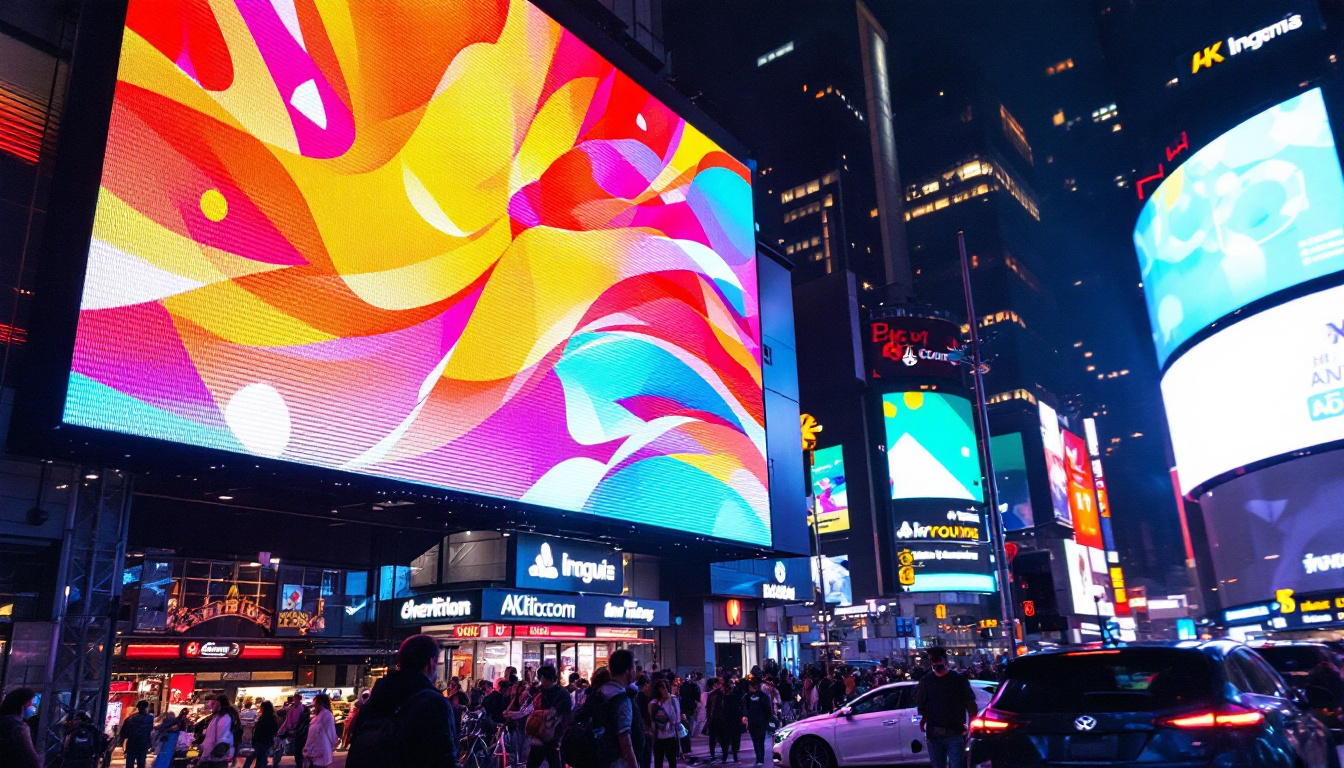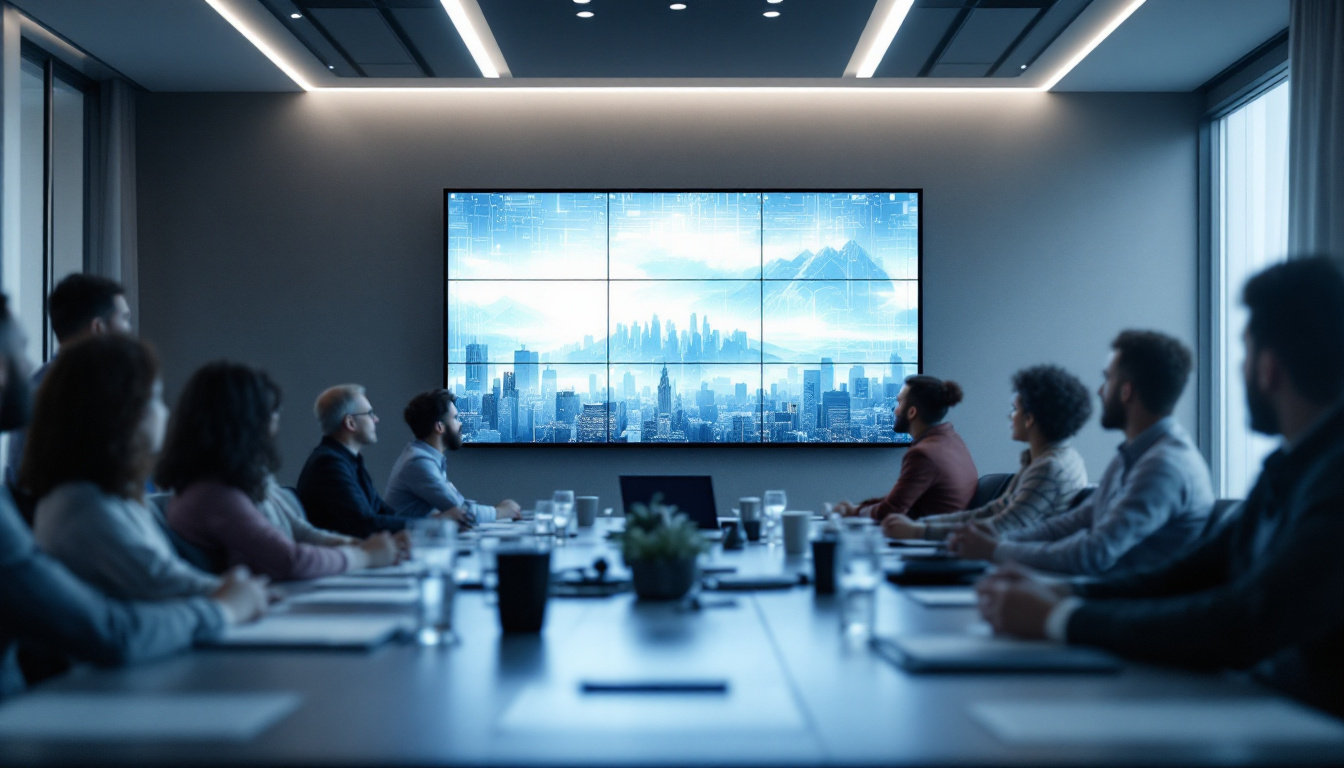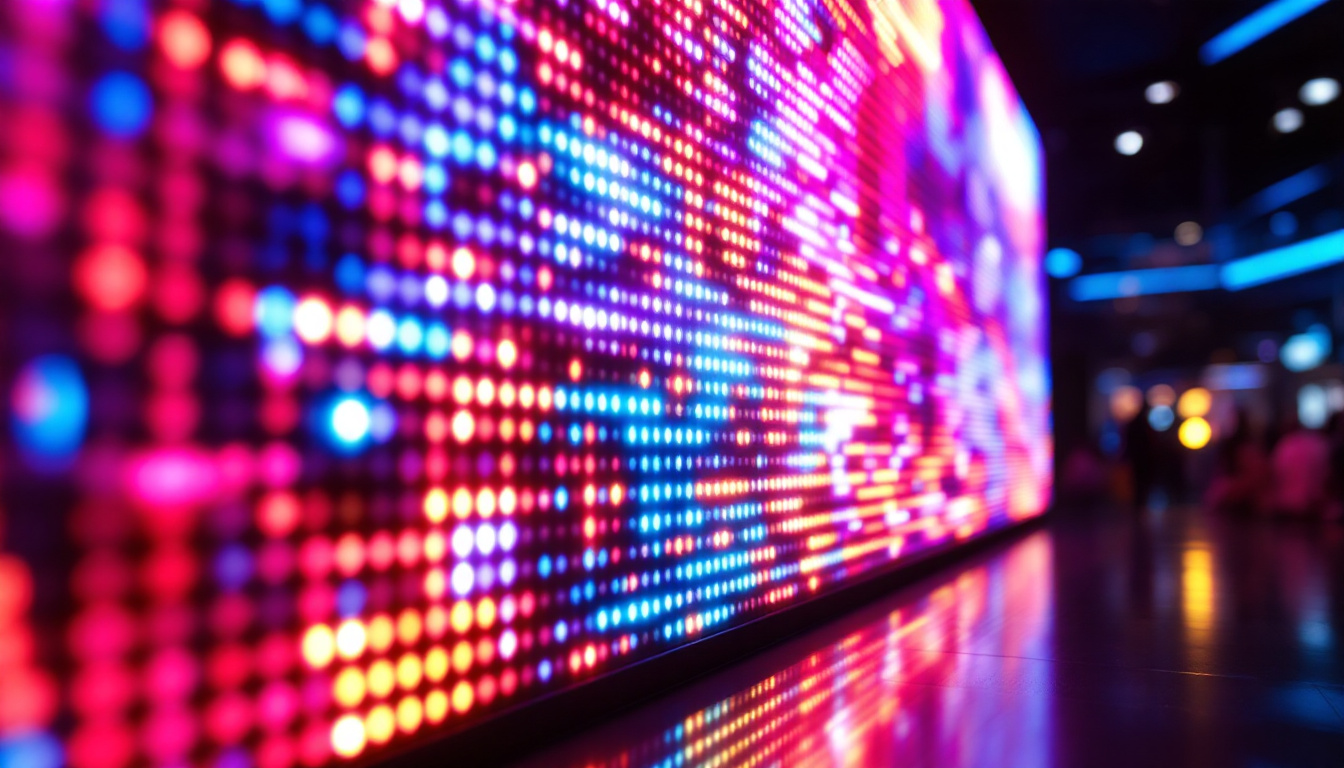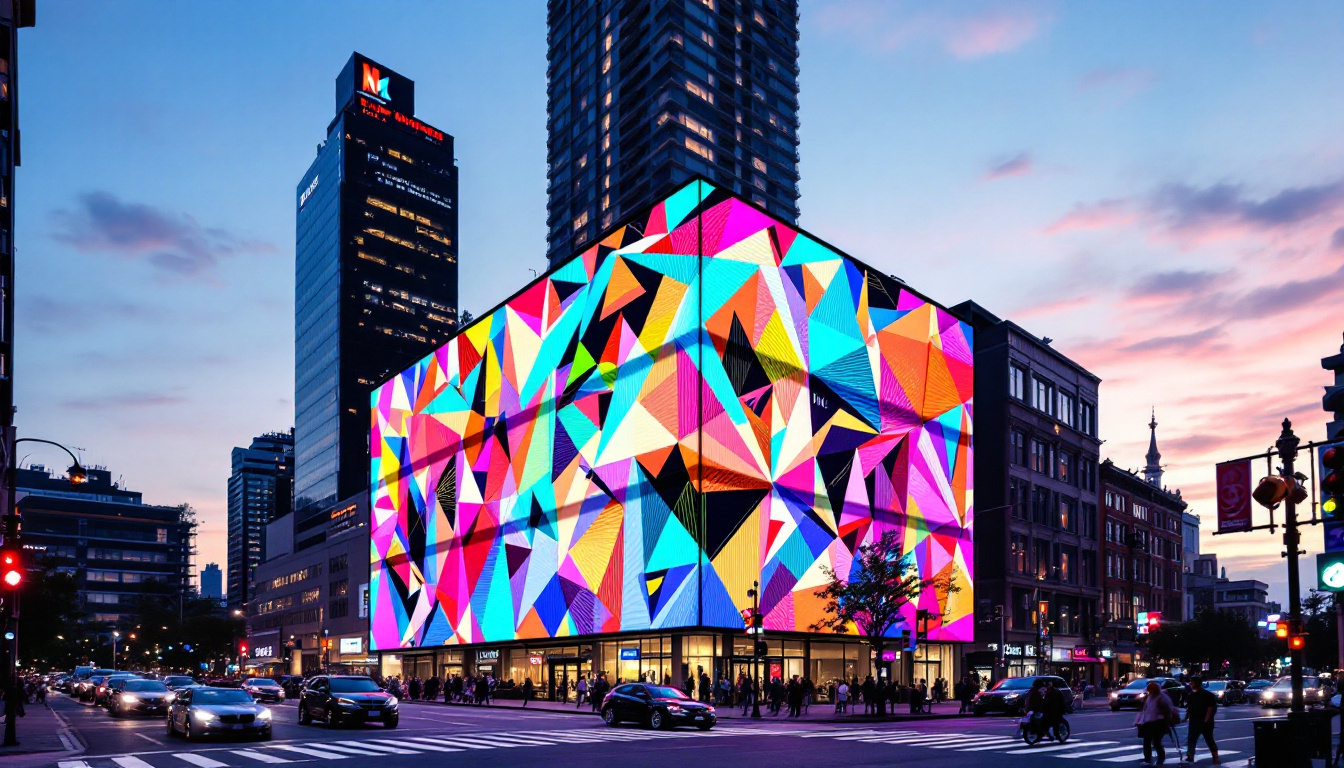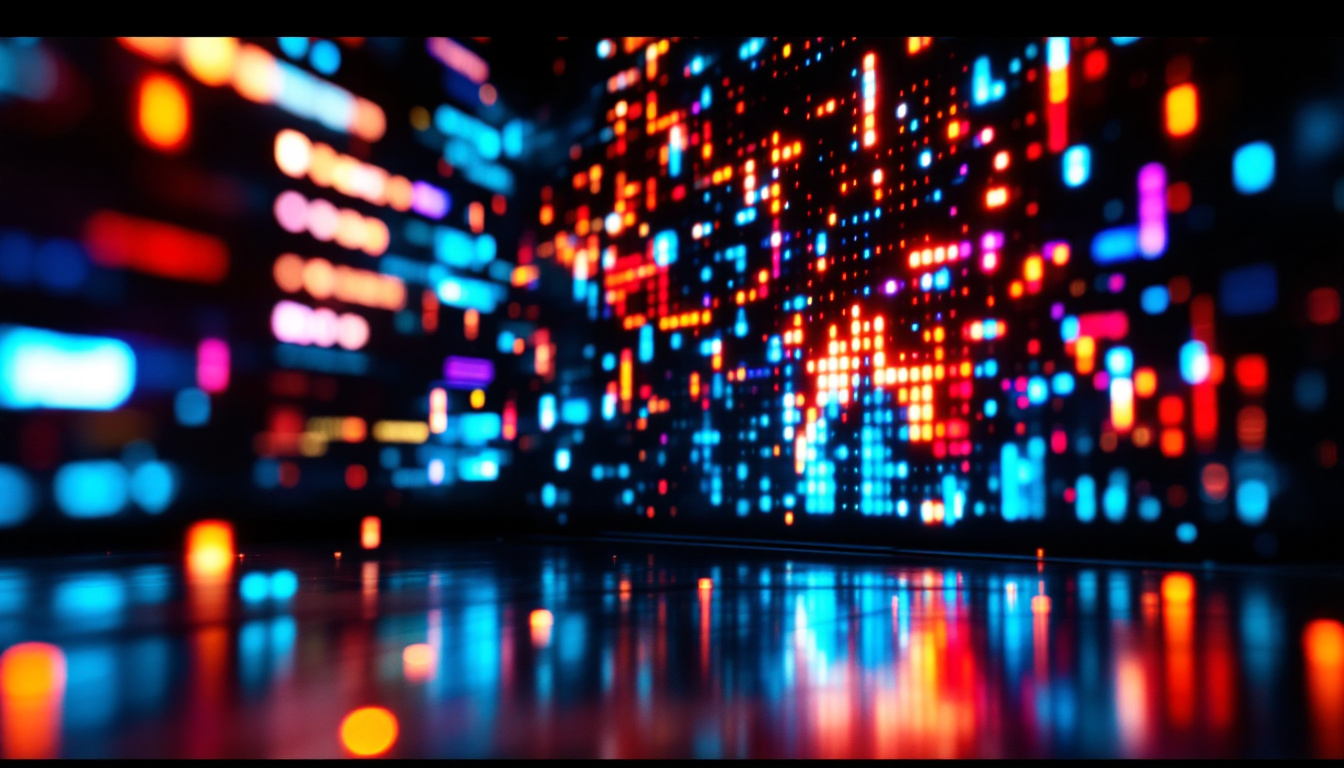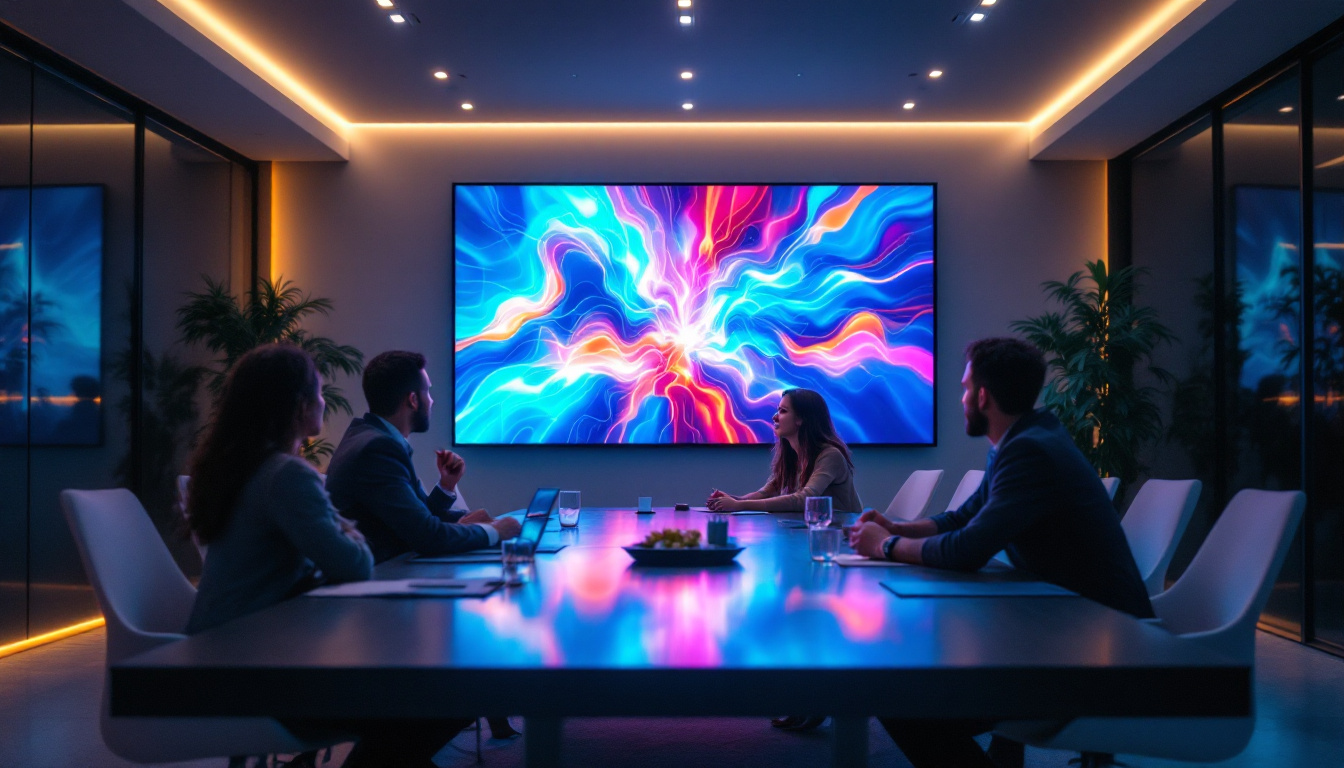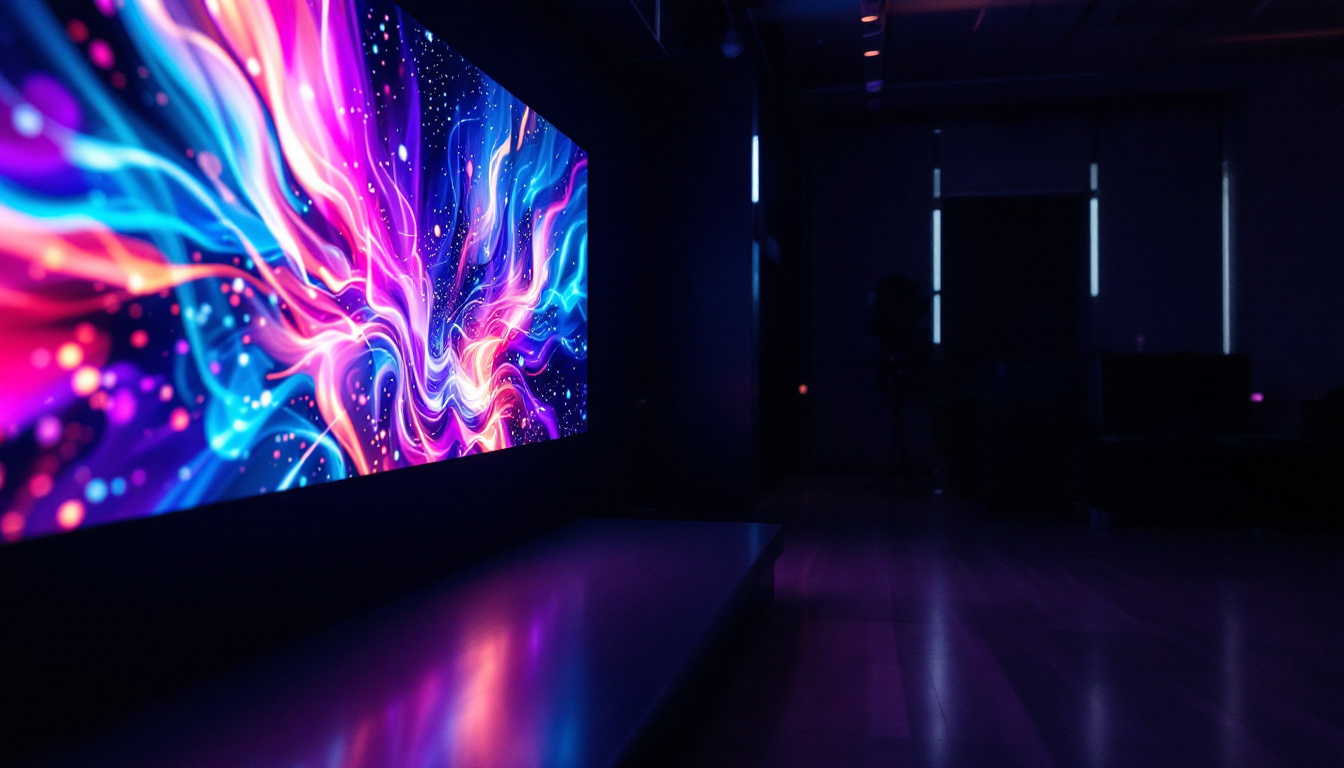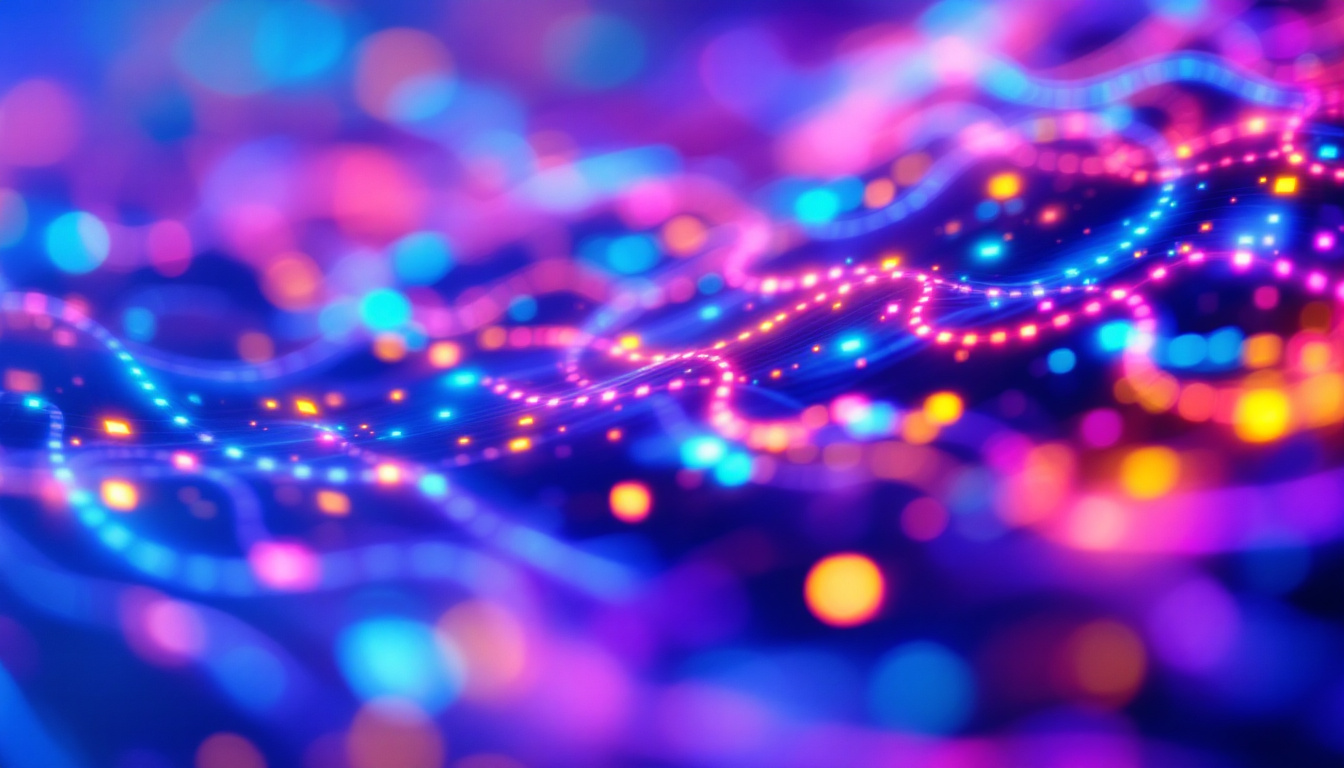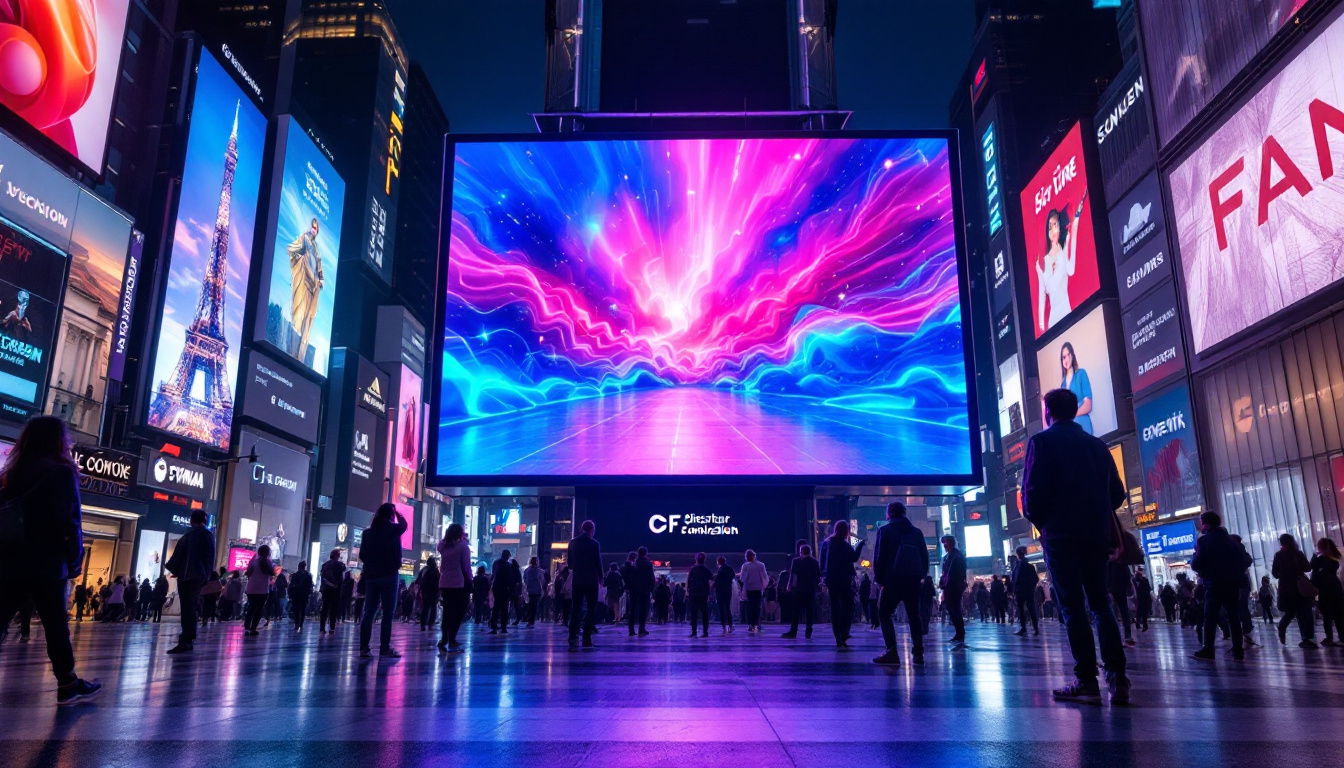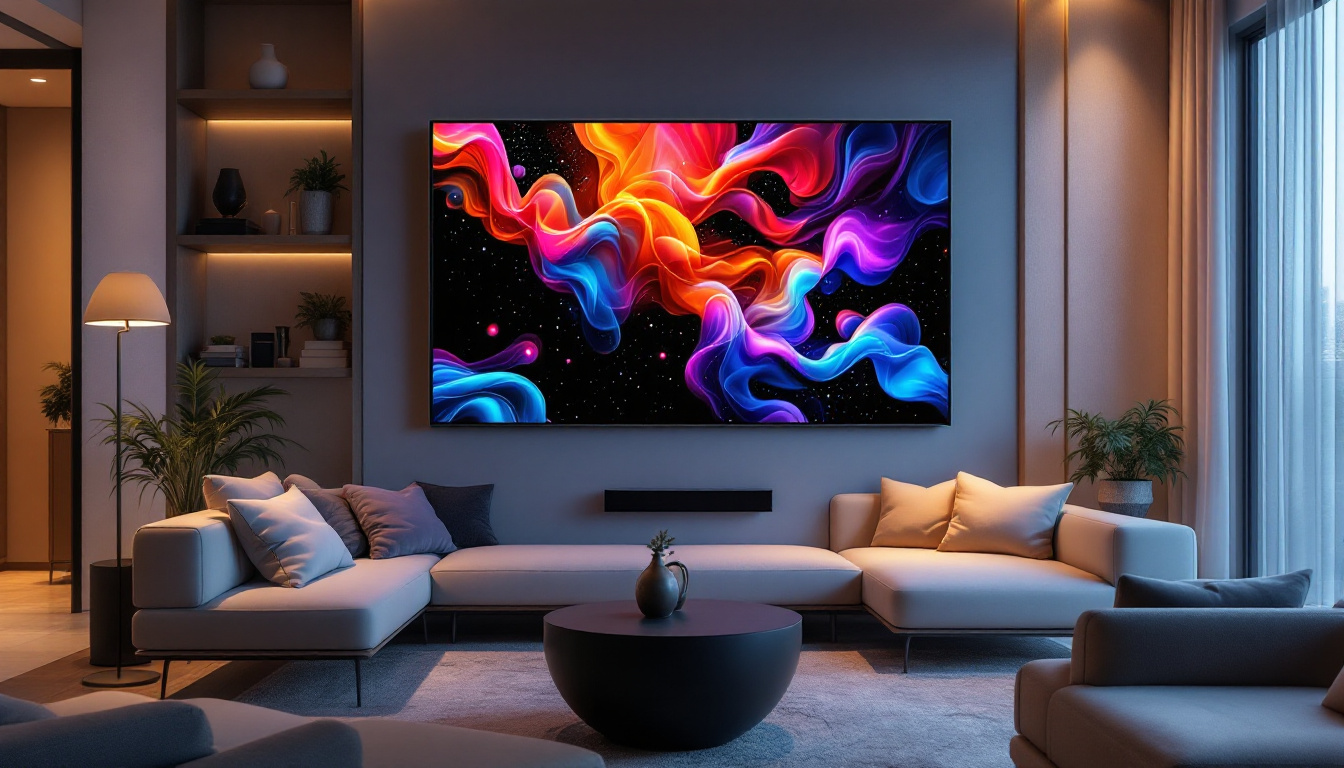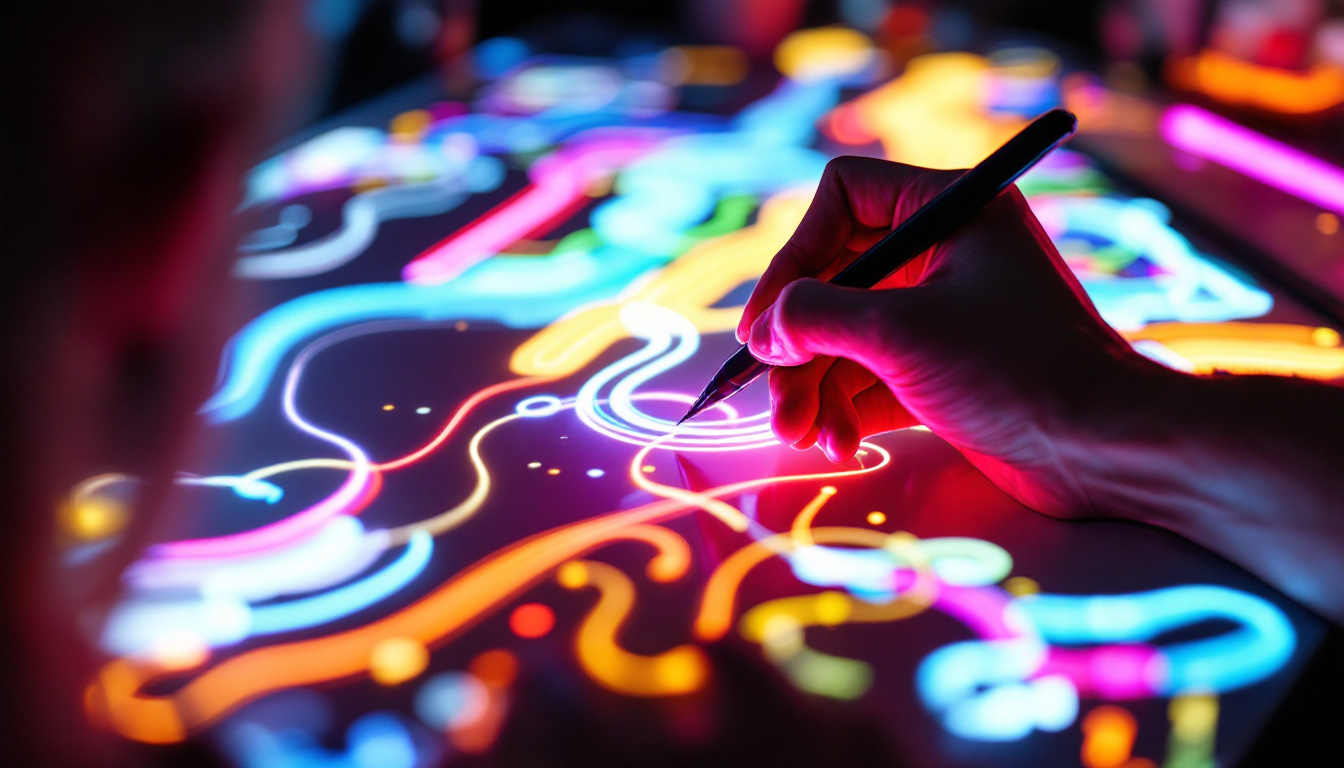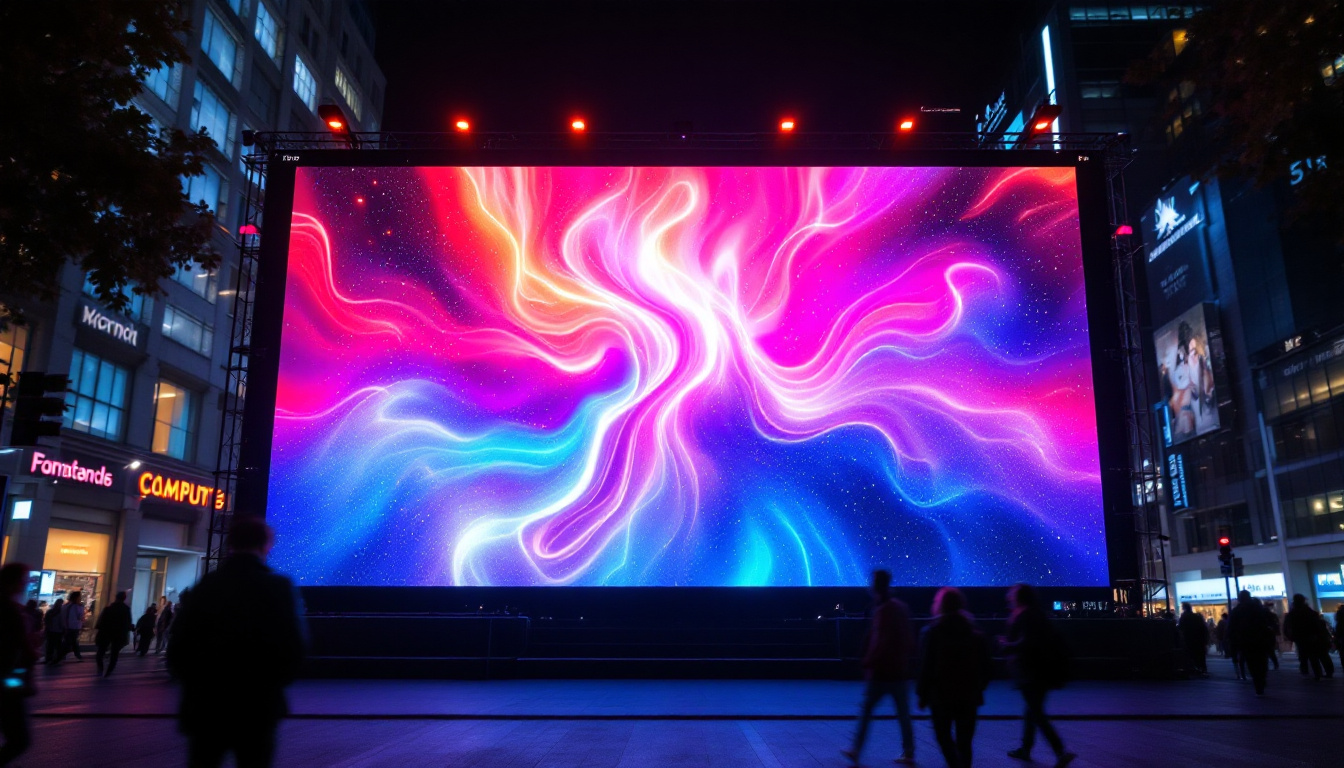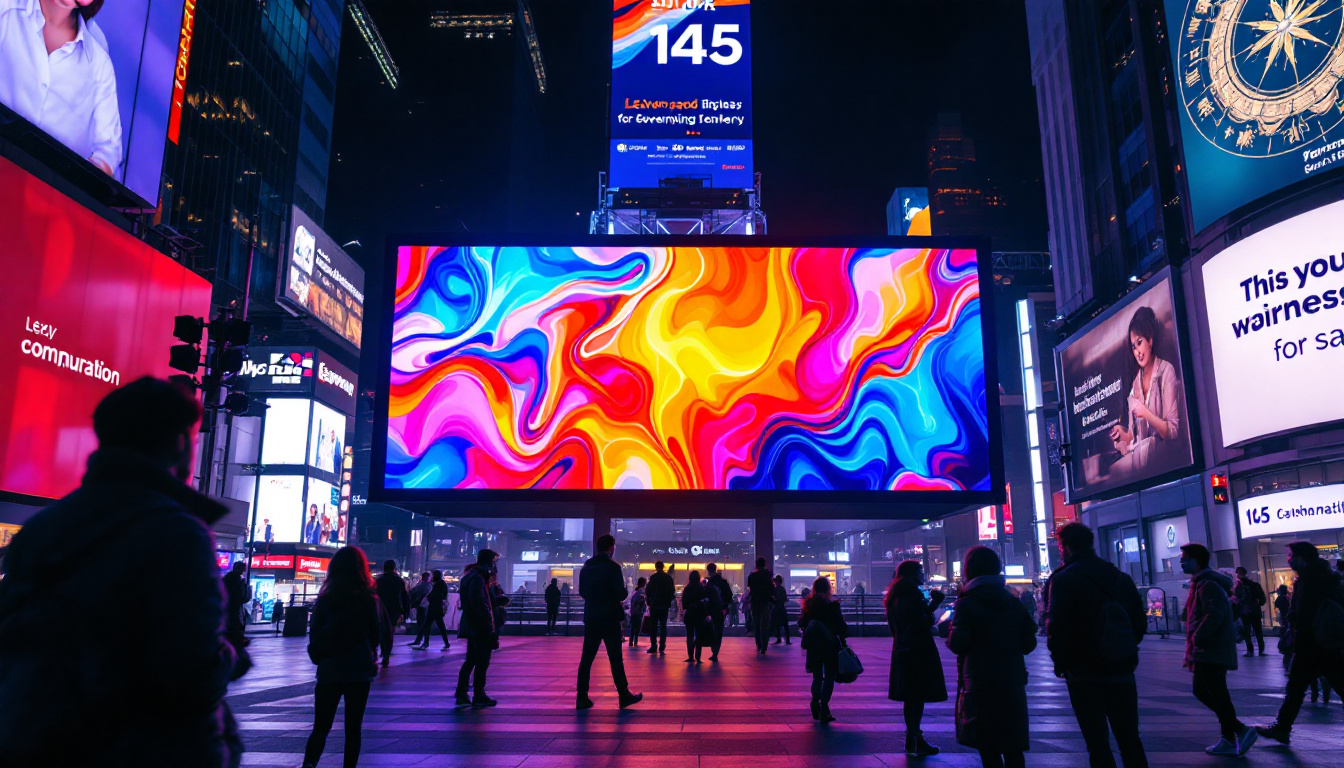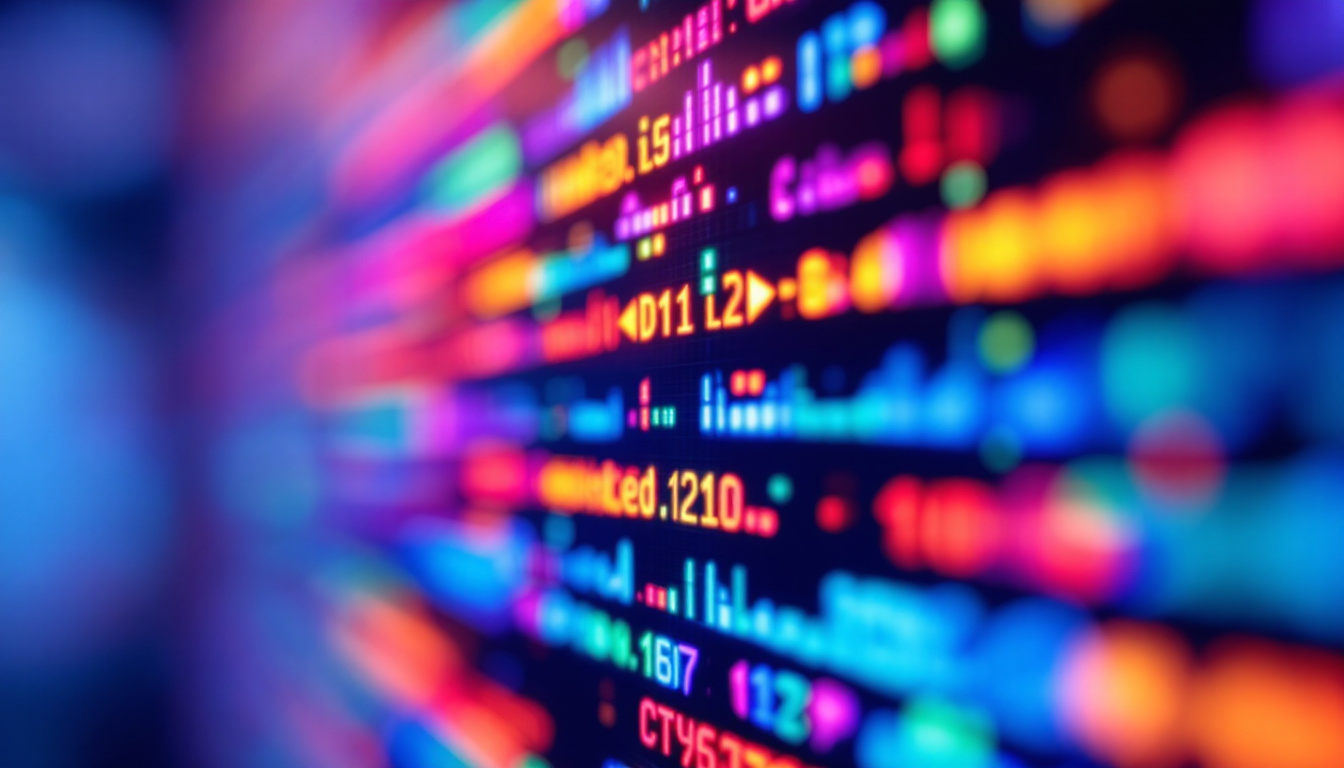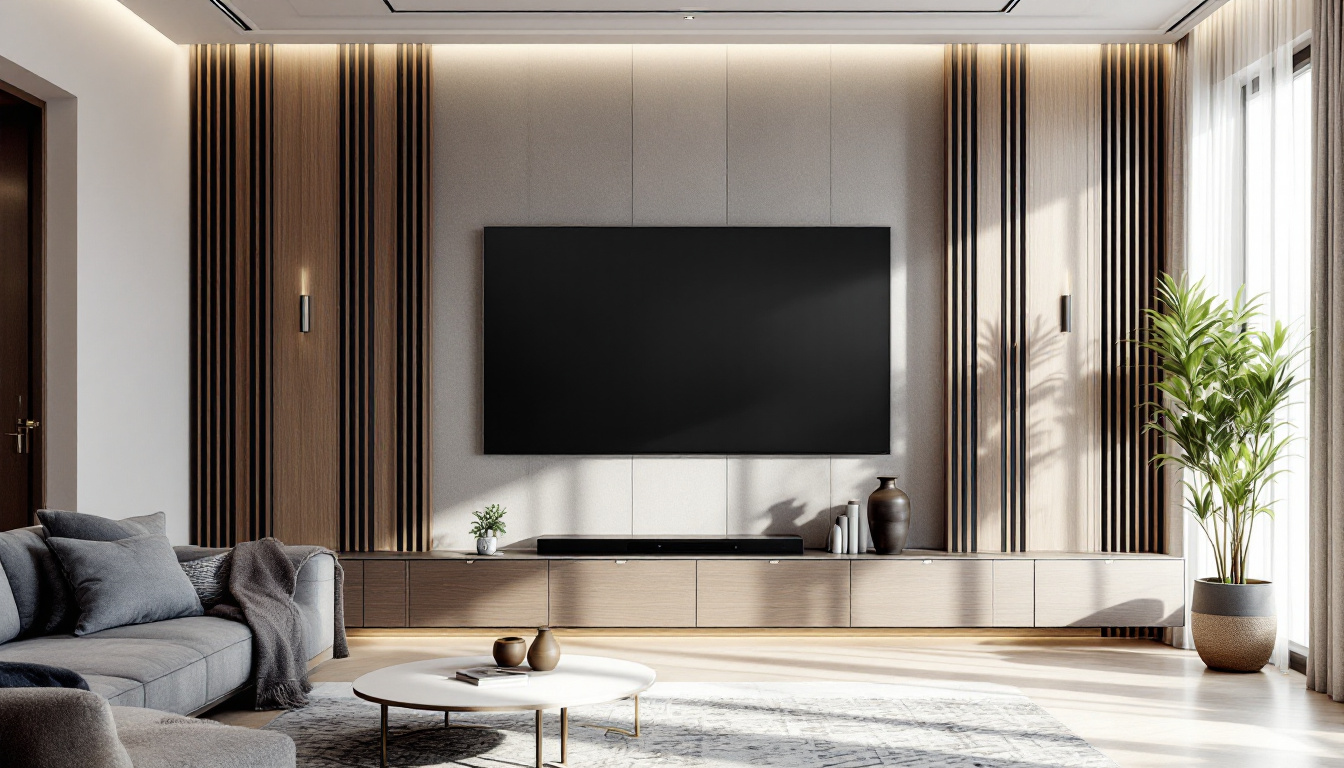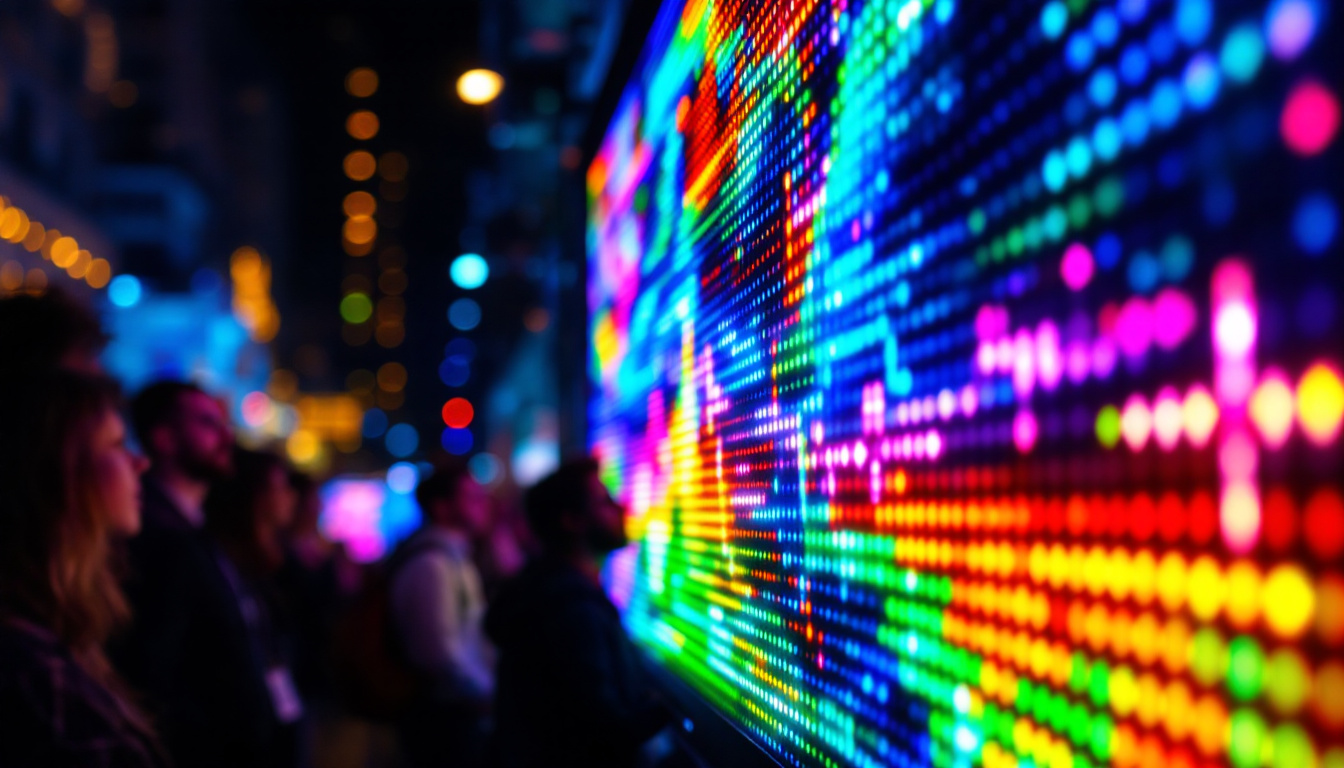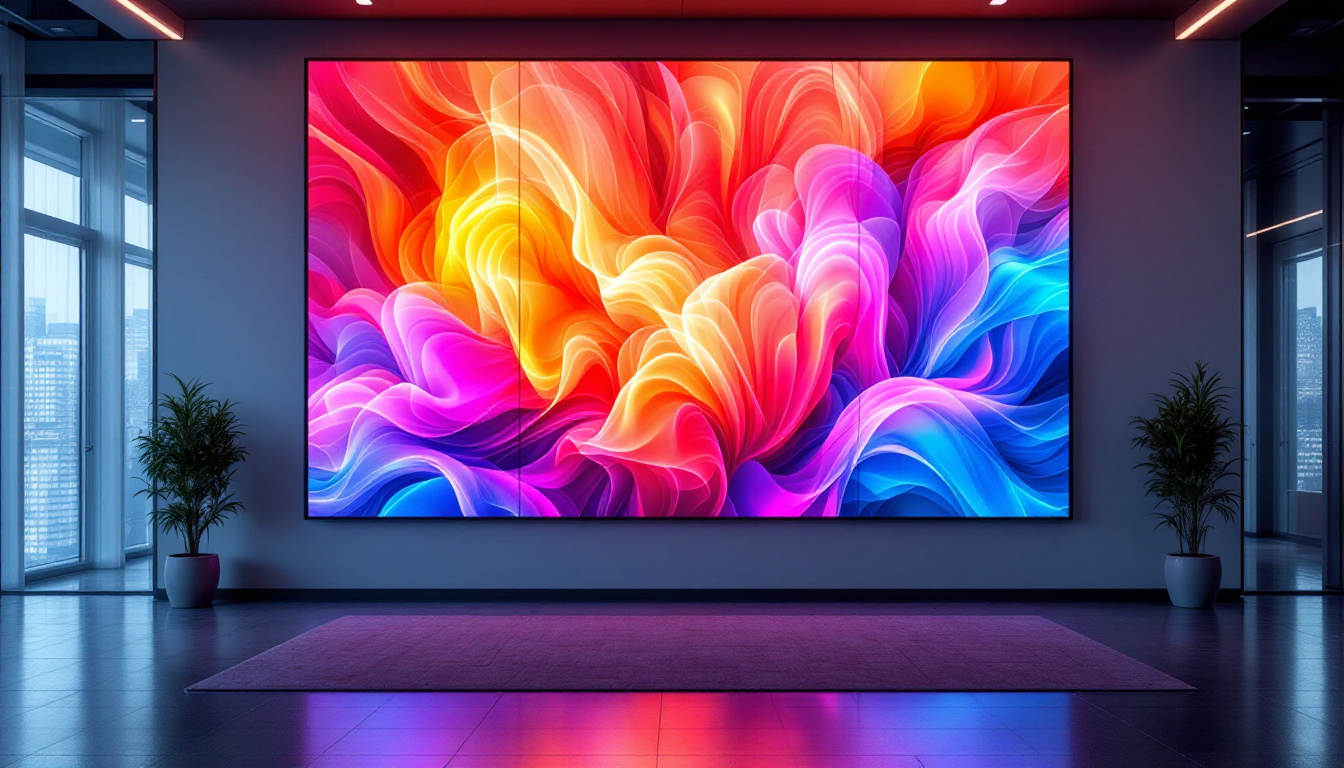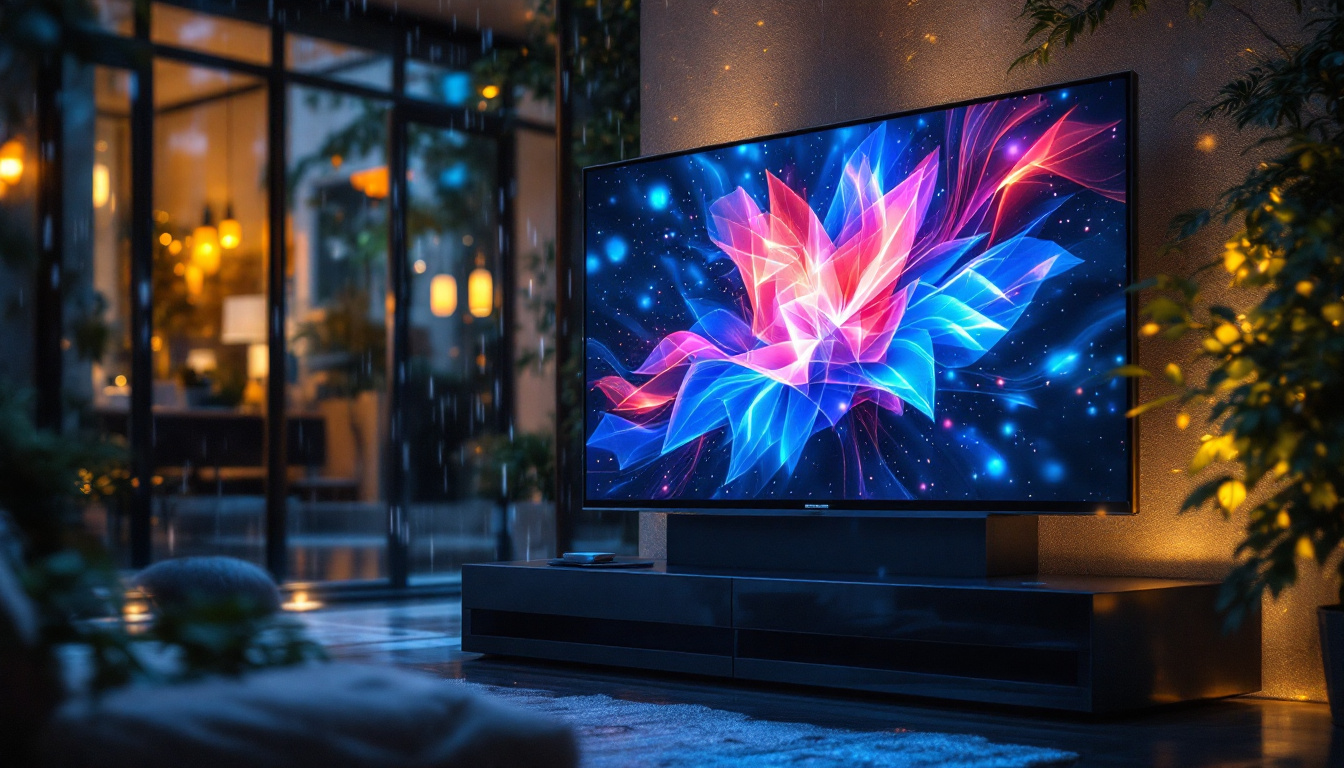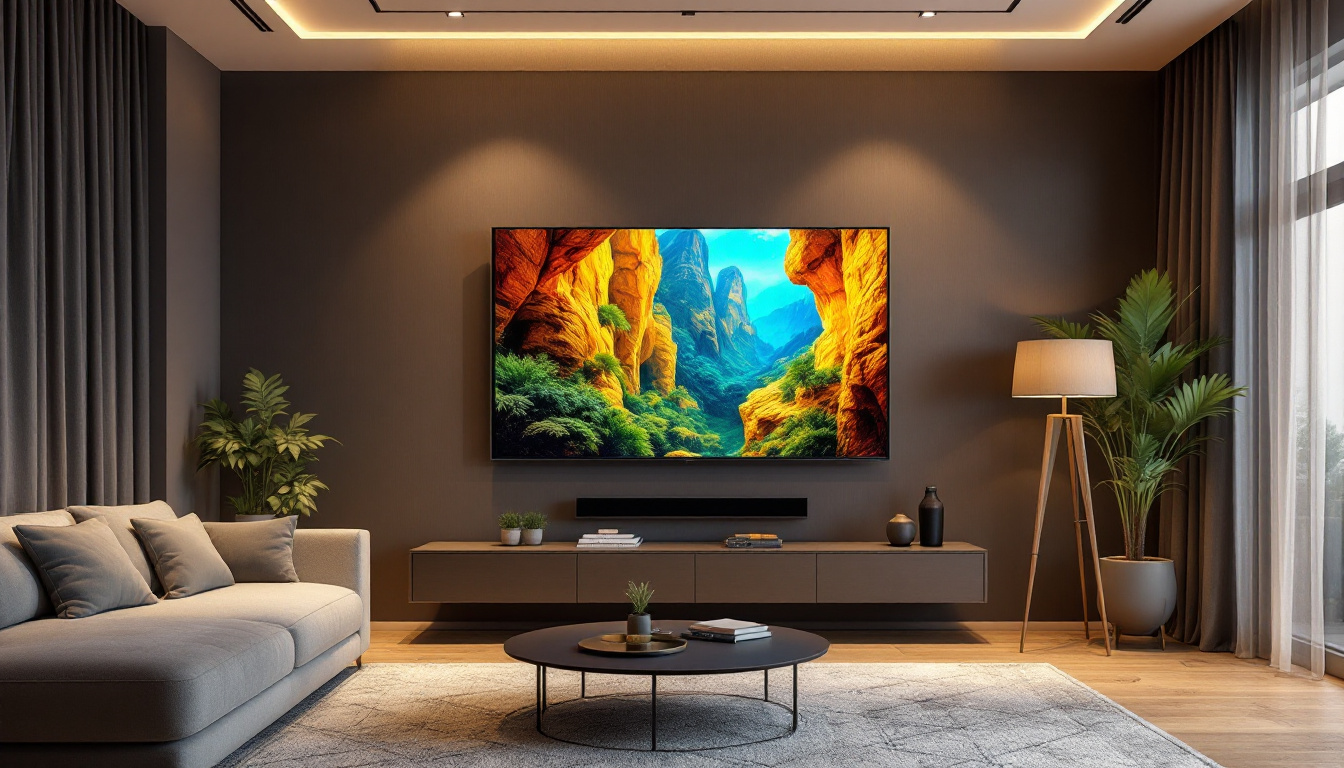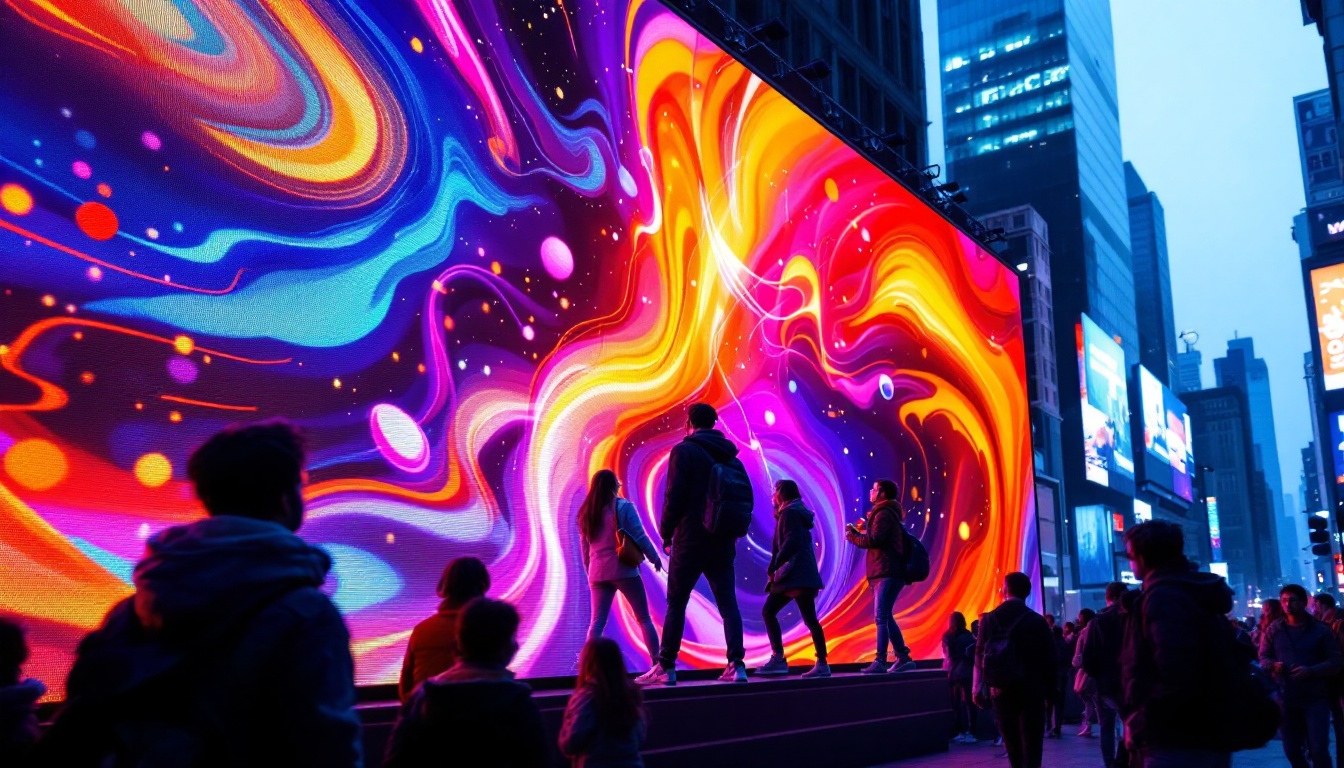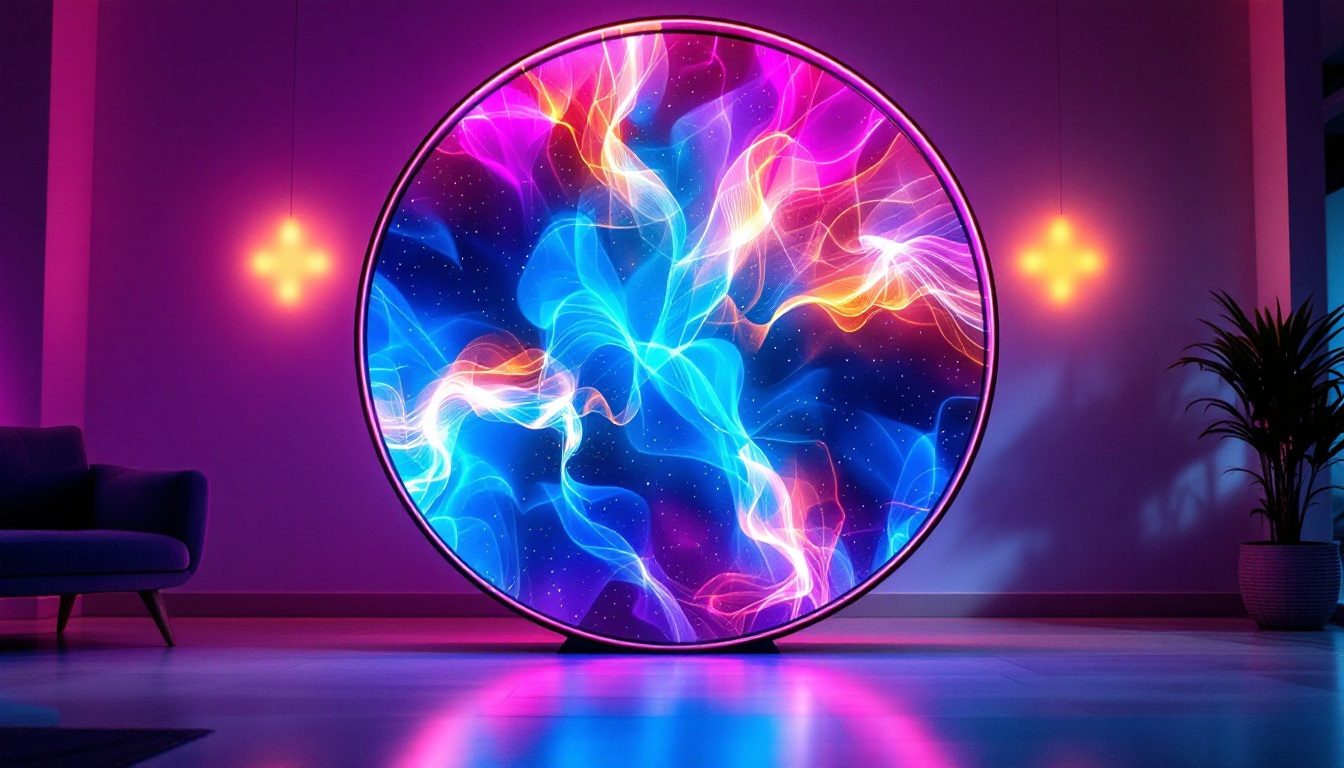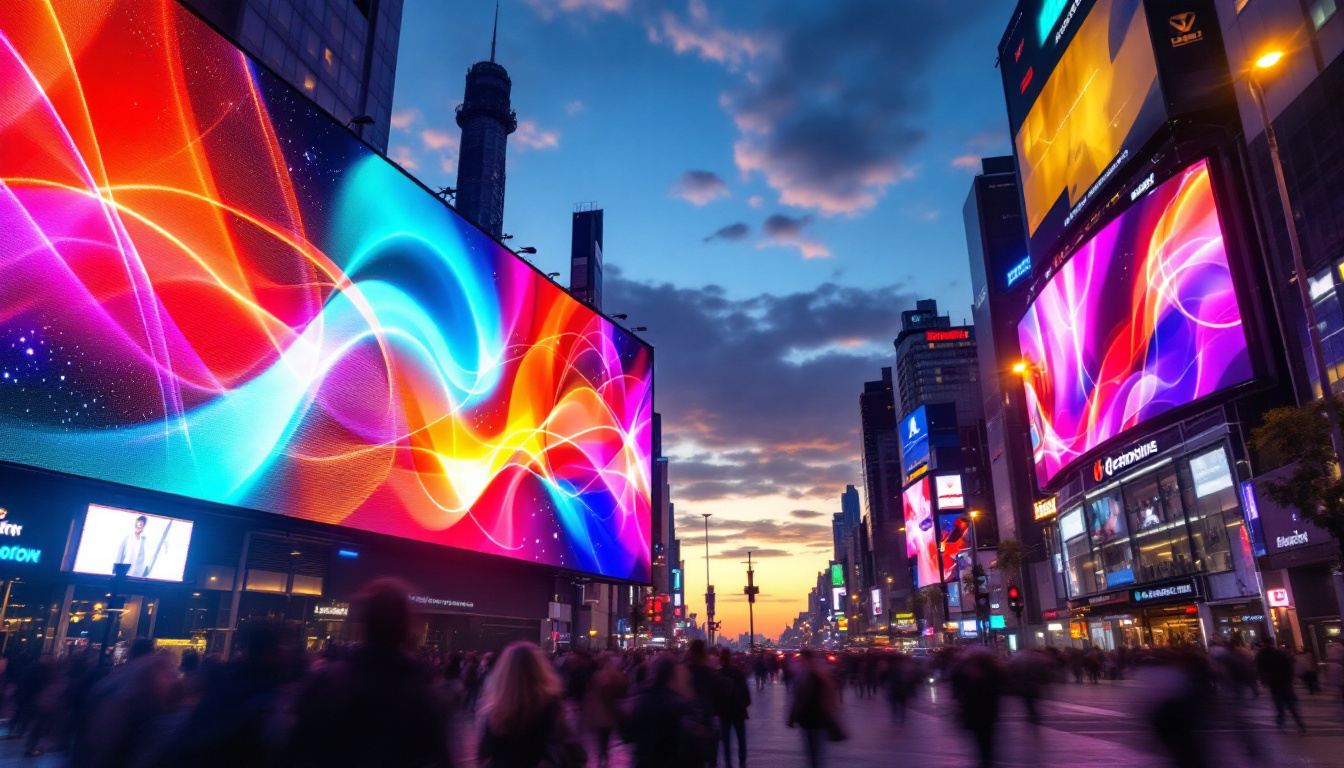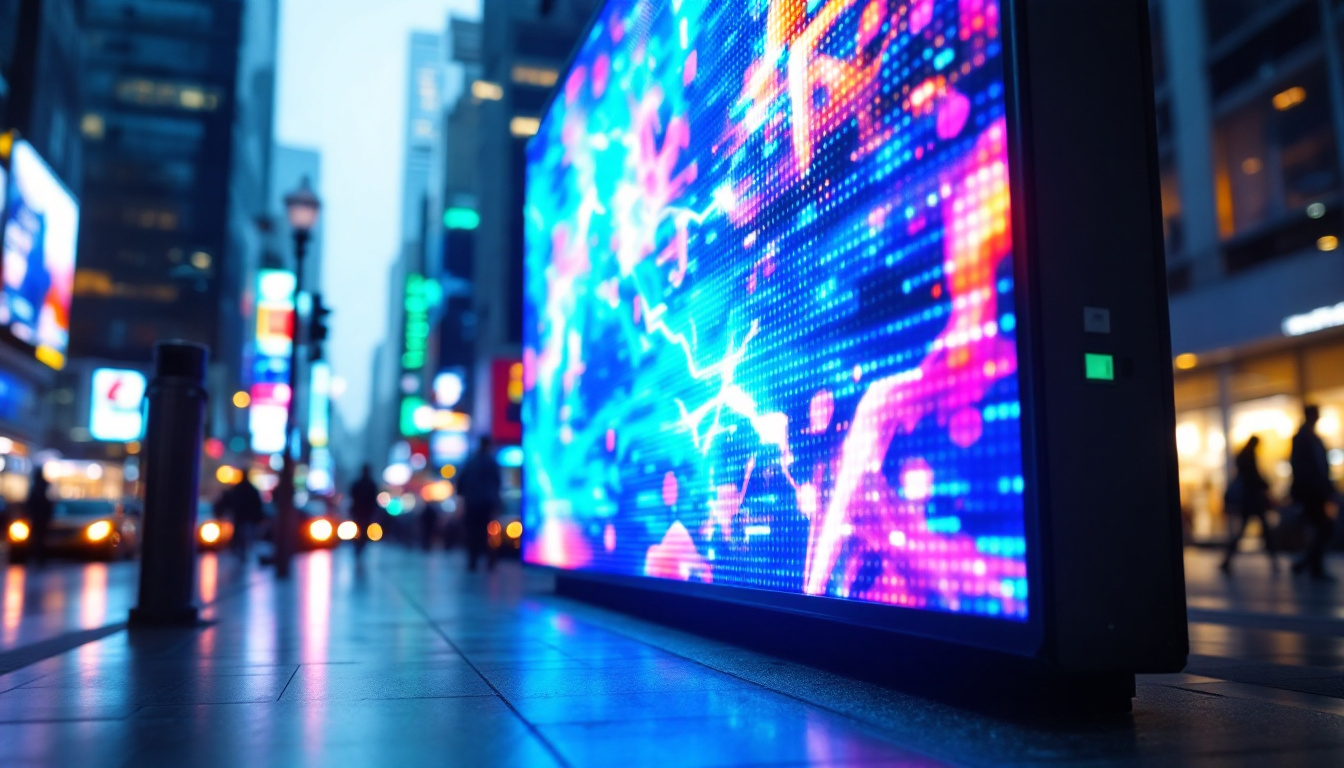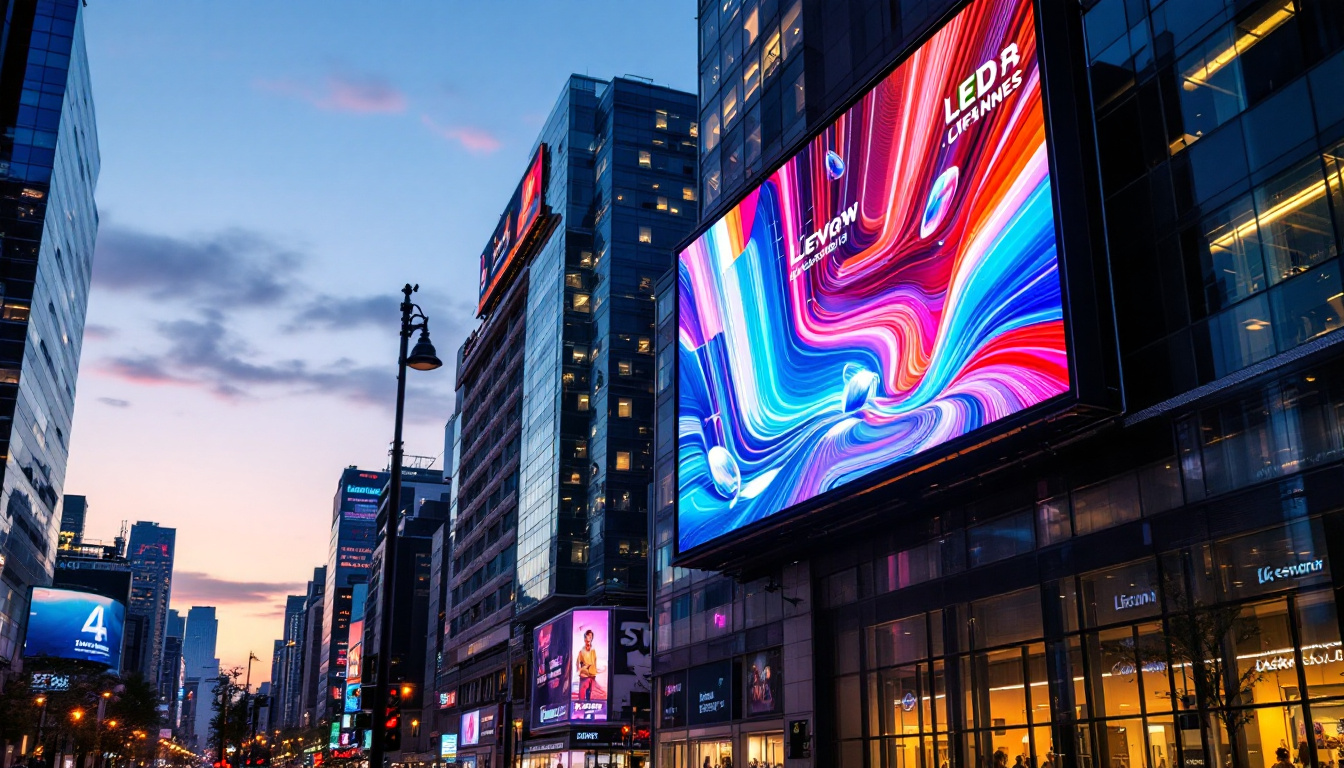In the world of modern technology, LED displays have become ubiquitous, transforming the way we interact with visual content. From smartphones to large-scale billboards, the versatility and efficiency of LED (Light Emitting Diode) technology have made it a preferred choice for various applications. This article delves into the intricacies of LED displays, exploring their functionality, advantages, and the diverse range of uses.
What is an LED Display?
An LED display is a flat panel display that uses light-emitting diodes as its primary light source. Unlike traditional displays that rely on backlighting or other methods to produce images, LED displays generate light directly from the diodes, resulting in vibrant colors and high contrast ratios. This technology has revolutionized the display industry, offering a more energy-efficient and longer-lasting alternative to older technologies. The compact nature of LEDs also allows for thinner and lighter displays, making them ideal for modern applications where space and weight are critical considerations.
How LED Displays Work
The fundamental principle behind LED displays lies in the semiconductor properties of diodes. When an electric current passes through the diode, it emits light. By combining red, green, and blue (RGB) diodes, an LED display can produce a wide spectrum of colors. The arrangement of these diodes in a grid allows for the creation of images and videos by varying the intensity of each color. This pixel-based approach not only enhances image quality but also enables dynamic content display, making LED screens particularly popular for advertising and entertainment purposes.
In most cases, LED displays can be categorized into two main types: direct view and rear-projection. Direct view displays are made up of individual LED modules that are visible from the front, while rear-projection displays use LEDs to illuminate a screen from behind. Each type has its own set of advantages and is suited for different environments and applications. For instance, direct view displays are often preferred for their brightness and clarity in well-lit environments, while rear-projection displays can offer larger sizes without the bulk of traditional projection systems.
Types of LED Displays
LED displays come in various forms, each designed to meet specific needs. Some of the most common types include:
- Indoor LED Displays: Typically used in environments such as shopping malls, conference rooms, and airports, these displays are designed for close viewing distances and offer high resolution and brightness. They often feature advanced technologies like high refresh rates, which are crucial for displaying fast-moving images without blurring.
- Outdoor LED Displays: Built to withstand harsh weather conditions, outdoor displays are brighter and more robust, making them ideal for billboards, stadiums, and public events. These displays are engineered with protective coatings and enhanced cooling systems to ensure longevity and performance even in extreme temperatures.
- Transparent LED Displays: These innovative displays allow light to pass through, making them perfect for retail environments where visibility is key. They can be integrated into windows and other surfaces without obstructing views. This feature not only enhances aesthetics but also provides opportunities for interactive advertising, allowing brands to engage customers in unique ways.
In addition to these types, there are also specialized LED displays such as flexible LED screens, which can be bent and shaped to fit unconventional spaces, and high-definition LED walls that create immersive experiences in venues like theaters and concert halls. As technology continues to advance, the applications for LED displays are expanding, paving the way for even more innovative uses in fields like virtual reality, augmented reality, and beyond.
Advantages of LED Displays
The rise of LED technology has brought numerous benefits, making it a popular choice across various sectors. Understanding these advantages can help businesses and consumers make informed decisions when selecting display solutions.
Energy Efficiency
One of the most significant advantages of LED displays is their energy efficiency. Compared to traditional lighting technologies, LEDs consume significantly less power, leading to lower electricity bills and a reduced carbon footprint. This efficiency is particularly beneficial for large-scale installations, where energy savings can be substantial over time. Moreover, many LED displays come equipped with intelligent sensors that adjust brightness based on ambient light, further optimizing energy consumption and enhancing visibility in various lighting conditions.
Longevity and Durability
LED displays are known for their impressive lifespan, often exceeding 50,000 hours of use. This durability means that businesses can save on maintenance and replacement costs, making LED displays a cost-effective investment in the long run. Additionally, they are less susceptible to damage from impacts and vibrations, making them suitable for a variety of environments. For instance, outdoor LED displays are designed to withstand harsh weather conditions, including rain, snow, and extreme temperatures, ensuring reliable performance regardless of the environment. This resilience not only extends the life of the display but also enhances its versatility across applications, from sporting events to outdoor advertising.
High-Quality Visuals
LED technology offers superior image quality, with bright colors and sharp contrasts that enhance the viewing experience. The ability to produce deep blacks and vivid colors makes LED displays ideal for applications where visual clarity is essential, such as advertising, entertainment, and presentations. Furthermore, the fast refresh rates of LED displays minimize motion blur, making them perfect for video content. This high-quality visual performance is complemented by the wide viewing angles that LED displays provide, ensuring that audiences can enjoy consistent image quality from various perspectives. Additionally, advancements in LED technology have led to the development of finer pixel pitches, allowing for even greater detail and resolution, which is particularly advantageous for close-up viewing in retail environments or trade shows.
Applications of LED Displays
LED displays are utilized in a wide array of applications, each benefiting from the unique features of this technology. From advertising to entertainment, the versatility of LED displays has made them an integral part of modern life.
Advertising and Marketing
In the advertising industry, LED displays have become a powerful tool for capturing attention. Dynamic content can be easily updated, allowing businesses to promote products and services in real-time. Outdoor LED billboards, for instance, can display vibrant advertisements that attract passersby, while indoor displays can be used to enhance the shopping experience. Additionally, the ability to incorporate interactive elements, such as QR codes or social media feeds, allows advertisers to engage consumers on a deeper level, transforming passive viewers into active participants. This interactivity not only boosts brand awareness but also fosters a sense of community around the brand, making LED displays a vital component of modern marketing strategies.
Entertainment and Events
Concerts, sports events, and festivals often feature large LED screens to provide audiences with an immersive experience. These displays can show live feeds, graphics, and animations, enhancing the overall atmosphere of the event. The ability to create stunning visuals in various environments makes LED displays a staple in the entertainment industry. Moreover, advancements in LED technology have led to the development of flexible and transparent displays, which can be seamlessly integrated into stage designs or architectural elements. This innovation allows for a more cohesive visual narrative, captivating audiences with breathtaking imagery that complements live performances. As a result, event organizers are increasingly turning to LED displays not just for their visual impact, but also for their ability to create a memorable and engaging experience for attendees.
Corporate and Educational Use
In corporate settings, LED displays are used for presentations, meetings, and training sessions. Their high visibility ensures that information is easily conveyed to large audiences. Similarly, educational institutions utilize LED displays in classrooms and auditoriums to enhance learning experiences through engaging visuals and interactive content. Beyond traditional presentations, these displays can facilitate collaborative learning by allowing multiple users to share content simultaneously, fostering a more interactive and participatory environment. Furthermore, with the rise of remote learning, LED displays have become essential tools for virtual classrooms, enabling educators to present dynamic content and maintain student engagement, regardless of location. This adaptability underscores the growing importance of LED technology in both corporate and educational landscapes, as it continues to evolve and meet the demands of modern communication and learning methods.
Future Trends in LED Display Technology
The LED display market is continually evolving, with advancements in technology leading to exciting new possibilities. As the demand for high-quality visual content grows, several trends are emerging in the industry.
Mini and Micro LED Technology
Mini and micro LED technologies represent the next generation of LED displays, offering even higher resolutions and improved color accuracy. These smaller diodes can be packed more densely, resulting in displays that are thinner and lighter while providing exceptional image quality. As this technology becomes more mainstream, it is expected to revolutionize everything from televisions to mobile devices.
Flexible and Curved Displays
Flexibility is another exciting trend in LED display technology. Manufacturers are developing flexible LED panels that can be bent and shaped to fit various surfaces. This innovation opens up new design possibilities for advertising and architecture, allowing for creative installations that were previously unimaginable.
Integration with Smart Technology
As smart technology continues to advance, LED displays are increasingly being integrated with IoT (Internet of Things) capabilities. This integration allows for real-time data sharing and content updates, enabling businesses to create more personalized and interactive experiences for their audiences. For example, smart LED displays in retail settings can adapt content based on customer preferences and behaviors.
Conclusion
LED displays have transformed the landscape of visual communication, offering energy-efficient, high-quality, and versatile solutions for a variety of applications. From advertising to entertainment, the impact of LED technology is profound and far-reaching. As advancements continue to emerge, the future of LED displays promises even more exciting possibilities, paving the way for innovative uses that enhance our daily lives.
Understanding the fundamentals of LED displays is essential for anyone looking to leverage this technology effectively. Whether for business, education, or personal use, the advantages of LED displays make them a compelling choice in today’s digital age.
Explore the Future of Visual Communication with LumenMatrix
Ready to elevate your visual presence and engage your audience like never before? Discover LumenMatrix’s innovative LED display solutions, where cutting-edge technology meets creative design. From vibrant Indoor LED Walls to dynamic Outdoor Displays, and from customizable options to All-in-One solutions, LumenMatrix is your partner in revolutionizing visual communication. Don’t just take our word for it; experience the difference yourself. Check out LumenMatrix LED Display Solutions today and see how we can help you share your message with impact and clarity.

